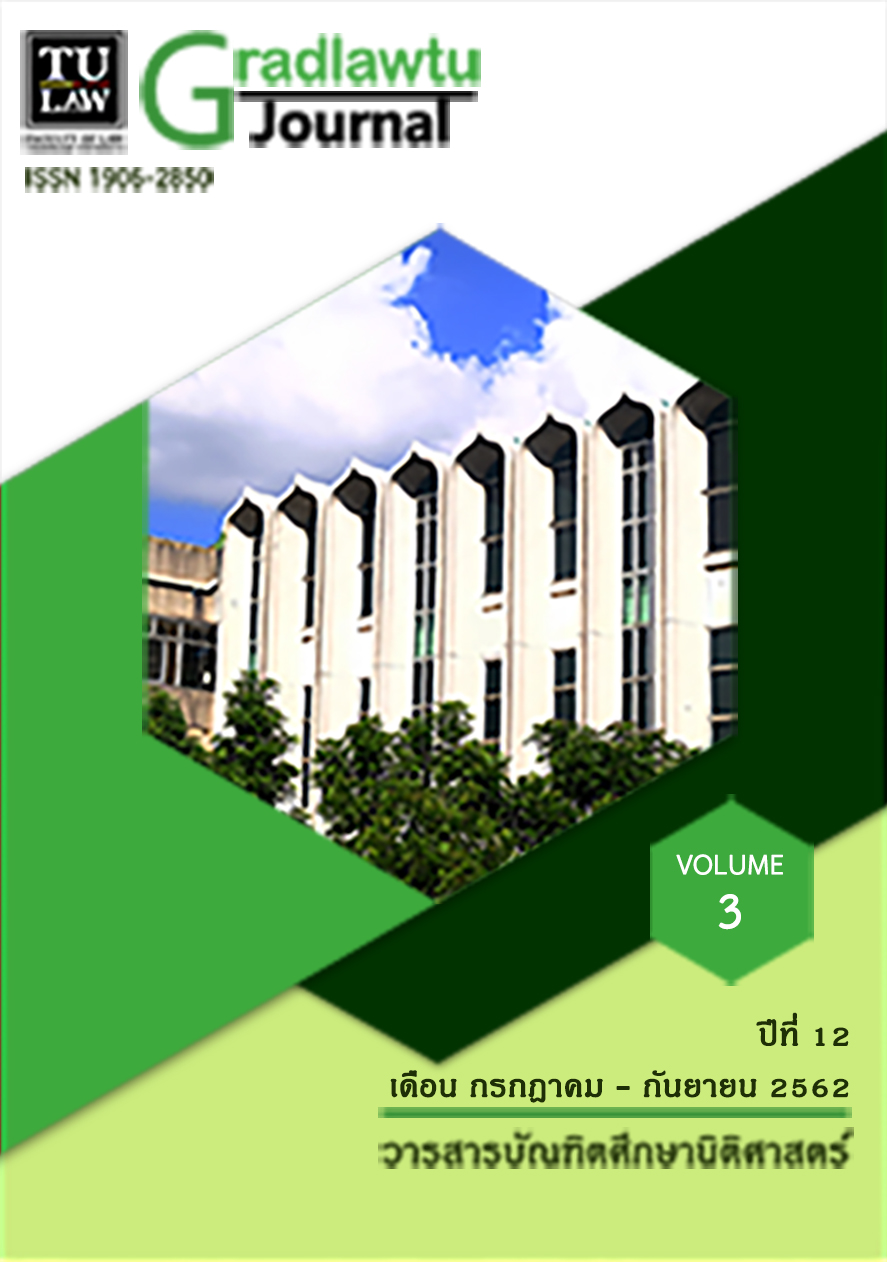LEGAL MEASURES FOR CONTROLLING AIR POLLUTION FROM WASTE-TO-ENERGY PLANTS APPLYING INCINERATION
Main Article Content
Abstract
Although construction of waste-to-energy plants to eliminate waste and to make power transformation will be a solution to waste management and energy insufficiency, the combustion inside incinerators results in air pollution. This inevitably leads to environmental effect. According to study, it is found that legal measures for controlling air pollution emitted by waste-to-energy plants are still improper and partially defective. Therefore, the relevant legal measures should be amended for more strictness and generality. This is to productively control air pollution emitted by waste-to-energy plants applying incinerators and to minimally affect environment.
Article Details
บทความหรือข้อความคิดเห็นใด ๆ ที่ปรากฏในวารสารบัณฑิตศึกษานิติศาสตร์เป็นวรรณกรรมของผู้เขียนโดยเฉพาะคณะนิติศาสตร์ มหาวิทยาลัยธรรมศาสตร์ และบรรณาธิการไม่จำเป็นต้องเห็นด้วย
References
2.สุกานดา พัดพาดีและคณะ, หนังสือวิชาการผลกระทบต่อสุขภาพจากเตาเผามูลฝอยชุมชน, พิมพ์ครั้งที่ 1 (นนทบุรี : อินฟินิตี้, 2558), น.17.
3.สำนักงานนโยบายและแผนทรัพยากรธรรมชาติและสิ่งแวดล้อม กระทรวงทรัพยากรธรรมชาติและสิ่งแวดล้อม, “การประเมินสิ่งแวดล้อมระดับยุทธศาสตร์ (Strategic Environmental Assessment : SEA),” สืบค้นเมื่อวันที่ 24 กรกฎาคม 2561, จาก https://www.onep.go.th/wp-content/uploads/1.-SEA.pdf
4.สำนักพัฒนามาตรฐาน กรมโยธาธิการและผังเมือง, “เกณฑ์และมาตรฐานผังเมืองรวม พ.ศ. 2549.” สืบค้นเมื่อวันที่ 8 กุมภาพันธ์ 2561, จาก https://subsites.dpt.go.th/edocument/images/
pdf/sd_urban/std_plan.pdf.
5.Directive 2000/76/EC of the European Parliament and of the Council on the incineration of waste.

